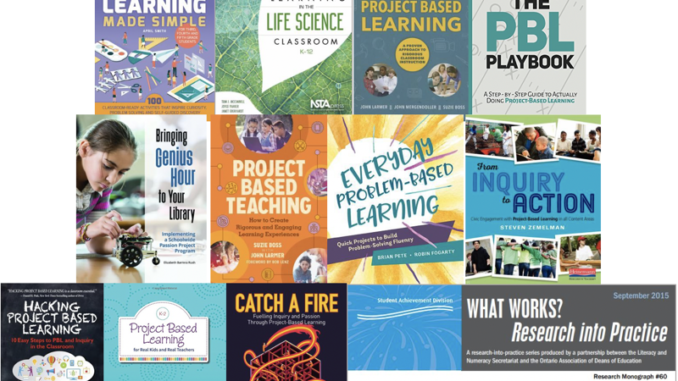
By Judy Chyung and Susan Ewing
“Project Based Learning is a teaching method in which students gain knowledge and skills by working for an extended period of time to investigate and respond to an authentic, engaging, and complex question, problem, or challenge. Students work on a project over an extended period of time – from a week up to a semester – that engages them in solving a real-world problem or answering a complex question. They demonstrate their knowledge and skills by creating a public product or presentation for a real audience. As a result, students develop deep content knowledge as well as critical thinking, collaboration, creativity, and communication skills. Project Based Learning unleashes a contagious, creative energy among students and teachers.”
Buck Institute for Education
We hope you enjoy this annotated list curated by the Toronto District School Board (TDSB) Professional Library in the Library Learning Resources and Global Education Department.
Links to TDSB Professional Library Catalogue records have been provided for some items (so you can see the summaries, MARC Records, etc.) but items are accessible only to TDSB staff.
Books
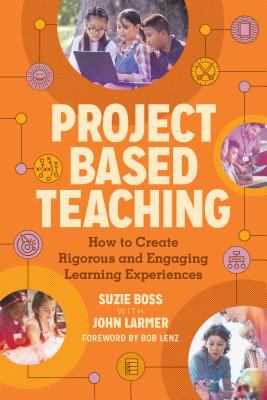
Boss, S., & Larmer, J. (2018). Project based teaching: how to create rigorous and engaging learning experiences. Novato, CA: Buck Institute for Education.
This is a follow up to their previous book, Setting the standard for project based learning: a proven approach to rigorous classroom instruction, that introduced a framework for Gold Standard PBL, created by Buck Institute for Education, for high quality projects with academic rigor. This book and a series of companion videos build on the framework and provide a much more detailed look at teaching practices and project designs in project-based learning classrooms.
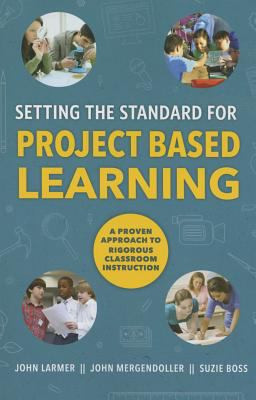
Boss, S., Larmer, J., & Mergendoller, J.R, (2015). Setting the standard for project based learning: a proven approach to rigorous classroom instruction. Alexandria, VA: ASCD.
The authors from the Buck Institute for Education set out to help teachers and school leaders design highest-quality project-based learning which they refer to as Gold Standard PBL. They describe what Gold Standard PBL looks like, show how teachers can design and manage great projects, and give many real-life examples of projects from classrooms around the world.
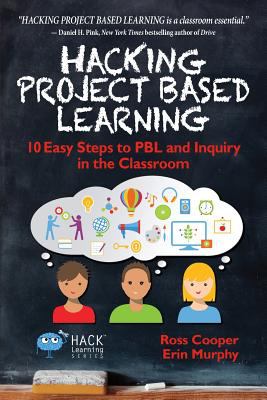
Cooper, R., & Murphy, E. (2016). Hacking project based learning: 10 easy steps to PBL and inquiry in the classroom. Cleveland, OH: Times 10 Publications.
This is a highly practical guide to implementing project-based learning within any classroom setting. The authors provide a blueprint for implementing ten easy steps or “hacks” for teachers and students to achieve success in project-based learning. The book also includes many helpful ideas for teachers in each step.

Elliott, L. (2017). Project-based learning: for real kids and real teachers, K-2. Peterborough, NH: SDE.
This is an easy to read book about getting kindergarten to grade 2 students into project-based learning. The author starts by describing the project based basics and managing project-based learning. In the second section, nine ready-to-go classroom-tested project-based learning units for K-2 are presented with easy to follow instructions.
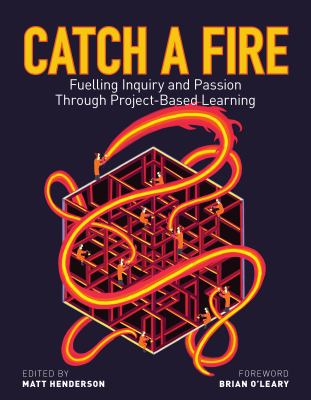
Henderson, M., (Ed.) (2019). Catch a fire: fuelling inquiry and passion through project-based learning.
Matt Henderson, a school district leader in Winnipeg, introduces this collection of stories from fourteen educators on the power of project-based learning to inspire, challenge and engage teachers. The stories highlight the power of project-based learning when students connect with teachers, students’ voices are honoured, and students are engaged with learning.
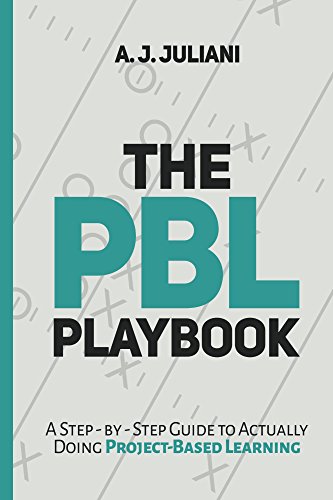
Juliani, A. J. (2018). The PBL playbook: a step-by-step guide to actually doing project-based learning. [S.l.]: White Nerdy Publishing.
This is a practical book on project-based learning that shows teachers how to implement project-based learning and still meet curriculum and learning goals. This book gives many stories from teachers in real classrooms around the world in a variety of curriculum areas.
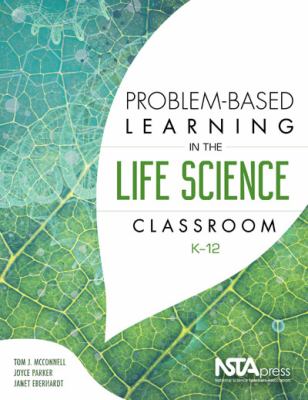
McConnell, T. J., Parker, J., & Eberhardt, J. (2016). Problem-based learning in the life science classroom, K-12. Arlington, VA: National Science Teachers Association.
This is one of three books in a series that shows teachers how to engage students with real-world science problems that they can tackle. It includes complete lesson plans for the real-life problems in Elementary Life Cycles, Ecology, Genetics, and Cellular Metabolism. The other two in the series cover Earth and Space Science and Physical Science.

Pete, B. M.& Fogarty, R. (2018). Everyday problem-based learning: quick projects to build problem-solving fluency. Alexandria, VA: ASCD.
This book shows teachers how to apply problem-based learning to their daily lessons to make learning for students authentic and relevant. Using practical examples, the authors describe how to engage students in each of the seven steps in the problem-based learning model, so students learn how to develop good questions, launch their inquiry, gather information, organize their information, create evidence, present their findings, and assess their learning.
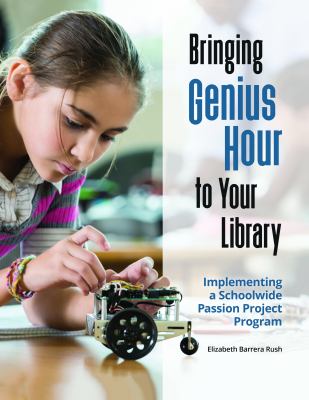
Rush, E.B. (2018). Bringing Genius Hour to your library: implementing a schoolwide passion project program. Santa Barbara, CA: Libraries Unlimited.
The author, a teacher librarian, presents a practical and realistic approach to implementing a school-wide, K–12 Genius Hour program where students come up with topics they are passionate about. This book demonstrates how a teacher librarian can provide a leadership in the school to implement a school-wide project-based learning program.
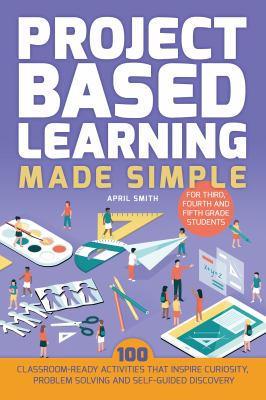
Smith, A. (2018). Project based learning made simple: 100 classroom-ready activities that inspire curiosity, problem solving and self-guided discovery for third, fourth and fifth grade students. Berkley, CA: Ulysses Press.
This is a helpful handbook that offers ready-to-go projects on a variety of different topics around Science and STEM, Math and Financial Literacy, Language Arts, Social Studies for students in the junior grades.
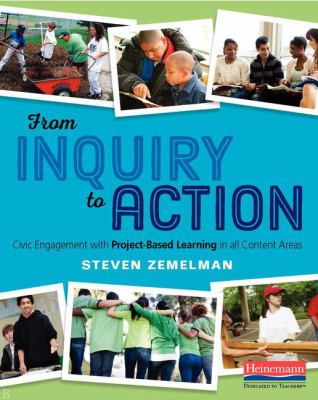
Zemelman, S. (2016). From inquiry to action: civic engagement with project-based learning in all content areas. Toronto: Heinemann.dence, present their findings, and assess their learning.
How do you increase students’ civic engagement and teach them to become more responsible citizens? It would go a long way if students work on projects that address real life issues affecting their local communities or the world, and they are shown how to bring about real changes to solve real-life problems. This book provides the guiding steps for students in that process.
Internet Resource
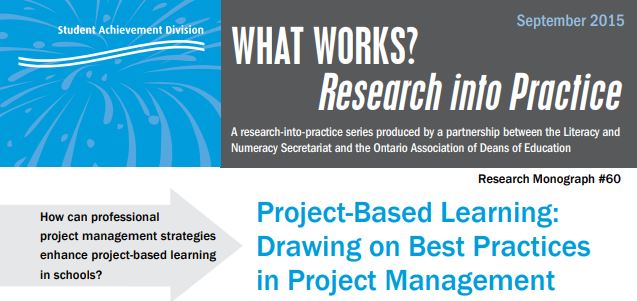
Hutchison, D (2015). Project-based learning: drawing on best practices in project management. What Works? Research into Practice. Research Monograph #60. Ontario Ministry of Education.
This paper from the Ministry points out that the project management challenges that teachers face with project-based learning, which can limit its effectiveness, can be mitigated by effectively employing the same techniques that professional project managers in business use.

Judy Chyung has an extensive experience providing Education Reference and Online Services to the educators and leaders of Toronto District School Board at the TDSB Professional Library. She enjoys reading and learning about the trends in education literature, and assisting TDSB educators with their information needs whether for their classroom support or for their professional learning. One of the current initiatives that she leads is the curated Resource Guides for Heritage Months celebrated by TDSB. You can check out the Guides at http://bit.ly/DirectoryHeritageMonthListsPL. Her daughter, who is currently in a middle school in TDSB, keeps her in touch with the pulse of a school life and daily issues our kids face in a school.

Susan Ewing was delighted to return to education librarianship to coordinate TDSB’s Professional Library in 2017, having started out post-MLS at Council of Ministers of Education, Canada (CMEC), Canadian Education Association and the Ontario Ministry of Education (1987-1996). Her learnings on her long detour through accessibility and social justice librarianship, including leadership roles at CNIB, AlphaPlus, York University Library Accessibility Services and 211, are more relevant than ever in supporting today’s teachers. Follow Susan’s tweets @Owlfindit and follow her library @ProfLibraryTDSB.